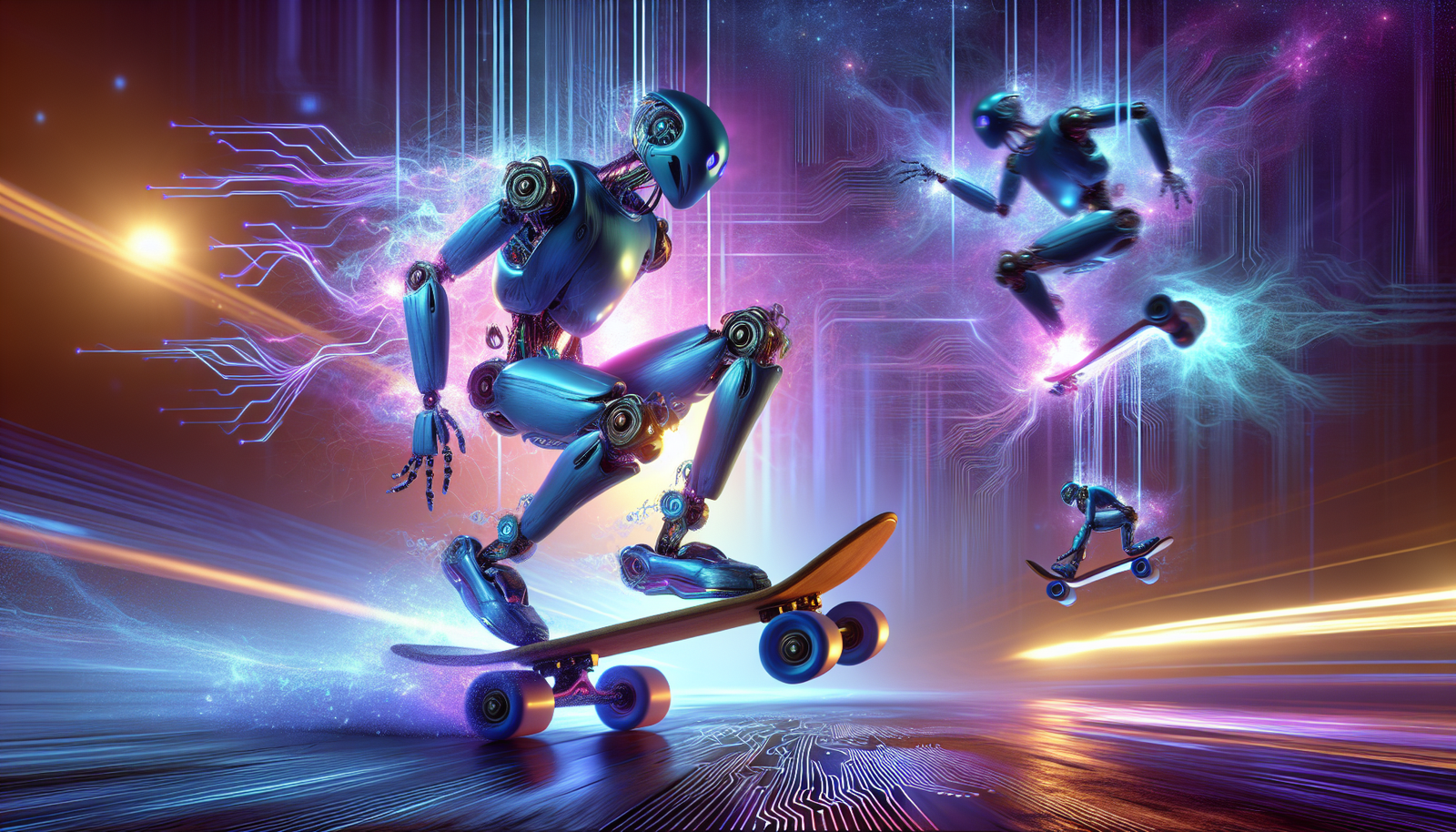Robotic intelligence is crossing unexpected thresholds with the *rise* of legged robots that juggle skateboards. A revolutionary reinforcement learning framework is transforming their *locomotion capabilities*, facilitating unprecedented advancements. These machines, equipped with impressive agility, are redefining our conception of dynamic robotics while elegantly navigating varied terrains.
The implications of this technology transcend mere amusement. *Far from simple demonstrations*, these advancements redefine the potential applications of robots in various fields. The technical challenges are enormous, but the results open up an experimental field for companies and researchers, promising unprecedented uses.
The advancements of legged robots on skateboards
The development of legged robots has taken a new step with the integration of a reinforcement learning framework. This framework enables robots to adapt to varied environments, including urban settings, where the complexity of movement intensifies.
An innovative framework for optimized movement
Researchers have designed an algorithm that allows machines to move more effectively on skateboards. This system relies on repeated trials and behavioral modifications, giving robots the ability to adjust to unstable surfaces. Thus, these robots can engage in diverse environments while maintaining optimal balance.
Inspiration from nature
The locomotion concepts of animals, particularly quadrupedal species, have greatly influenced the design of these robots. By drawing inspiration from natural movements, engineers have sought to replicate fluid and harmonious gestures, allowing for quick and agile movement. This process is essential for achieving impressive performances on elaborate surfaces.
Practical applications and future implications
The ability of robots to adapt to skateboards opens up diverse application prospects, particularly in the fields of logistics and transportation. These machines provide innovative solutions for delivering items in hard-to-reach environments. As a result, this development could transform the way goods are transported through constricted urban settings.
Education and robotics
Educational projects are already integrating these robots into playful learning platforms. Utilizing such devices in classrooms introduces students to the principles of robotics and programming. Students thus learn to design innovative solutions, enhancing their technical skills while having fun.
The challenges of modern robotics
Despite these advancements, challenges remain in the design of legged robots. Research on trajectory optimization algorithms and navigation systems remains crucial. Engineers strive to develop systems capable of orienting themselves without relying on external sensors, expanding the autonomous capabilities of machines.
A notable example is the intention to implement swarm behaviors in robots, inspired by how certain insect species interact. This approach could transform their functioning, making swarm deployment more effective in collaborative missions.
Conclusion: A promising future
As legged robots shine on skateboards, it is undeniable that they represent a harbinger of a future where robotics will be more integrated into daily life. The potential applications and the impact on education make it a field to watch closely.
To learn more about the advancements of robots and their various applications, recent research enriches the body of knowledge in robotics.
Frequently asked questions about legged robots and reinforcement learning
What are the advantages of reinforcement learning for legged robots using skateboards?
Legged robots using skateboards benefit from greater agility and better capacity to adapt their behavior in the face of obstacles, which is essential for navigating effectively in complex environments.
How do legged robots learn to use a skateboard?
These robots learn through trial and error, receiving rewards for correct behaviors and penalties for incorrect behaviors, which encourages them to optimize their movements over time.
What types of practical applications can be envisioned for these legged robots on skateboards?
Applications include package delivery in urban environments, assistance in public spaces, or even artistic performances, where they can execute complex movements.
Can legged robots simulate human movements using skateboards?
Yes, through reinforcement learning, these robots can imitate human gestures such as rotations or jumps, making them useful for demonstrations or performances.
What is the limit of using reinforcement learning in these robots?
The main limit lies in the complexity of environments; uneven terrains or unexpected obstacles can make learning more difficult and slow down the adaptation process.
How does research on these robots influence the future development of robotics?
This research paves the way for improvements in robot mobility, thereby opening up avenues for broader and more diverse applications across several industries.
What is the average time required to train a legged robot to effectively use a skateboard?
The training duration can vary, but it can take weeks to several months, depending on the complexity of the task and the environment in which the robot operates.
Are legged robots using reinforcement learning autonomous?
Mostly, yes. Thanks to their learning algorithm, they can make decisions and adapt to their environment without constant human intervention, although supervision is often necessary initially.






